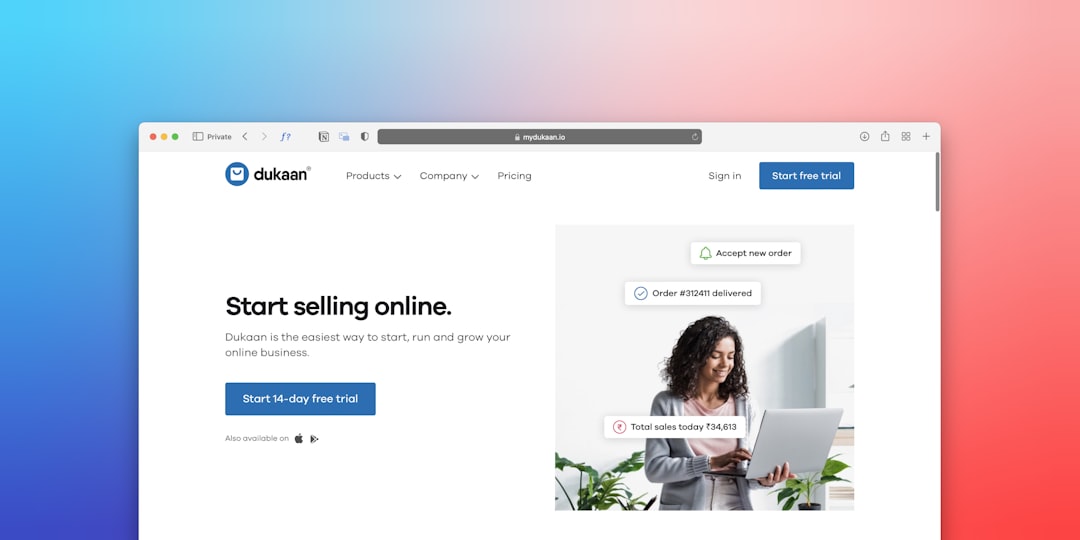PPC vs CPC: Understanding the Differences
When it comes to online advertising, there are two terms that are often used interchangeably: PPC and CPC. While they may seem similar, they actually refer to two different types of advertising models. In this article, we’ll explore the differences between PPC and CPC and how they can impact your online advertising strategy.
What is PPC?
PPC stands for pay-per-click and is a type of online advertising model where advertisers pay a fee each time their ad is clicked. This model is commonly used in search engine advertising, such as Google AdWords, where advertisers bid on keywords and pay for each click on their ad.
How Does PPC Work?
by Museums Victoria (https://unsplash.com/@museumsvictoria)
In a PPC campaign, advertisers bid on specific keywords that are relevant to their target audience. When a user searches for those keywords, the search engine will display ads that are relevant to the search query. The position of the ad is determined by the bid amount and the ad’s quality score, which is based on factors such as ad relevance and landing page experience.
When a user clicks on the ad, the advertiser is charged a predetermined amount, which is deducted from their budget. Once the budget is depleted, the ad will no longer be displayed.
Advantages of PPC
PPC offers several advantages for advertisers, including:
- Targeted advertising: With PPC, advertisers can target specific keywords and demographics, ensuring their ads are shown to the right audience.
- Cost control: Advertisers have control over their budget and can set a maximum bid for each keyword.
- Measurable results: PPC campaigns provide detailed analytics, allowing advertisers to track the performance of their ads and make adjustments as needed.
What is CPC?
CPC stands for cost-per-click and is a pricing model used in online advertising. In this model, advertisers pay a fee each time their ad is clicked, similar to PPC. However, CPC is not limited to search engine advertising and can be used in other forms of online advertising, such as display ads and social media ads.
How Does CPC Work?
by Joe Green (https://unsplash.com/@jg)
In a CPC campaign, advertisers pay a predetermined amount for each click on their ad. This amount is set by the advertiser and can vary depending on the platform and the competitiveness of the keywords. Unlike PPC, where the bid amount is a factor in ad placement, CPC ads are typically displayed in a rotating fashion.
Advantages of CPC
CPC offers several advantages for advertisers, including:
- Cost-effective: With CPC, advertisers only pay when their ad is clicked, making it a cost-effective option for those on a tight budget.
- Flexibility: CPC can be used in various forms of online advertising, giving advertisers more options for reaching their target audience.
- Easy to track: Like PPC, CPC campaigns provide detailed analytics, allowing advertisers to track the performance of their ads and make adjustments as needed.
PPC vs CPC: What’s the Difference?
While PPC and CPC may seem similar, there are a few key differences between the two advertising models.
Payment Structure
The main difference between PPC and CPC is the payment structure. In PPC, advertisers pay each time their ad is clicked, while in CPC, advertisers pay a predetermined amount for each click on their ad.
Ad Placement
In PPC, the bid amount and ad quality score determine the placement of the ad. The higher the bid and quality score, the higher the ad will appear in search results. In CPC, ads are typically displayed in a rotating fashion, regardless of the bid amount.
Platform Usage
PPC is primarily used in search engine advertising, while CPC can be used in various forms of online advertising, such as display ads and social media ads.
Which One Should You Use?
When deciding between PPC and CPC, it’s important to consider your advertising goals and budget. PPC may be a better option for those looking to target specific keywords and demographics, while CPC may be more cost-effective for those on a tight budget.
It’s also important to consider the platform you’ll be using for your advertising. If you’re primarily using search engine advertising, PPC may be the better option. However, if you’re using various forms of online advertising, CPC may be a more versatile choice.
Tips for a Successful PPC or CPC Campaign
Whether you choose PPC or CPC, there are a few tips that can help you run a successful campaign.
Choose the Right Keywords
by National Cancer Institute (https://unsplash.com/@nci)
Keywords are the foundation of any successful PPC or CPC campaign. It’s important to choose keywords that are relevant to your target audience and have a high search volume. You can use tools like Google Keyword Planner to research and select the best keywords for your campaign.
Create Compelling Ad Copy
Your ad copy is what will entice users to click on your ad, so it’s important to make it compelling and relevant. Use strong calls to action and highlight the benefits of your product or service to encourage users to click.
Monitor and Adjust Your Campaign
It’s important to regularly monitor the performance of your campaign and make adjustments as needed. This could include adjusting your bid amount, targeting different keywords, or changing your ad copy. By regularly monitoring and adjusting your campaign, you can ensure that you’re getting the best results for your budget.
Conclusion
PPC and CPC are two different advertising models that can help you reach your target audience and achieve your advertising goals. While they may seem similar, it’s important to understand the differences between the two and choose the one that best fits your budget and advertising strategy. By following the tips outlined in this article, you can run a successful PPC or CPC campaign and see the results you’re looking for.
Unlocking Opportunities in Global B2B
The world of business-to-business (B2B) transactions is rapidly evolving, and with the rise of technology and globalization, the opportunities for growth and expansion are endless. In this article, we will explore the potential of the global B2B marketplace and how businesses can tap into this market to unlock new opportunities.
The Rise of the Global B2B Marketplace
With the advent of the internet and advancements in technology, the global B2B marketplace has become more accessible and interconnected than ever before. Businesses can now easily connect with suppliers, manufacturers, and distributors from all over the world, opening up a world of opportunities for growth and expansion.
The Benefits of a Global B2B Marketplace
by Pattie Mitchell (https://unsplash.com/@traveldreams10)
The global B2B marketplace offers numerous benefits for businesses, including:
- Access to a wider range of suppliers and manufacturers, allowing for more competitive pricing and better quality products.
- Increased efficiency and speed in sourcing and procurement processes.
- The ability to reach new markets and expand globally.
- Improved supply chain management and visibility.
- Enhanced collaboration and communication with partners and suppliers.
The Role of Technology in Global B2B
Technology has played a significant role in the growth of the global B2B marketplace. With the rise of e-commerce platforms, businesses can now easily connect with suppliers and manufacturers from all over the world. Additionally, advancements in payment technology have made it easier and more secure to conduct global B2B payments, eliminating the barriers that once existed.
The Potential of Global B2B Payments
One of the key components of the global B2B marketplace is the ability to conduct cross-border payments. With the rise of e-commerce and the increasing globalization of businesses, the demand for efficient and secure global B2B payments has also increased.
The Challenges of Traditional B2B Payments
Traditional B2B payments, such as wire transfers and checks, are often slow, expensive, and prone to errors. These methods also lack transparency and can be difficult to track, making it challenging for businesses to manage their cash flow and reconcile payments.
The Advantages of Digital B2B Payments
by Gayatri Malhotra (https://unsplash.com/@gmalhotra)
Digital B2B payments, on the other hand, offer numerous advantages for businesses, including:
- Faster processing times, allowing for quicker transactions and improved cash flow management.
- Lower transaction fees, reducing the cost of doing business.
- Increased security and fraud protection.
- Real-time tracking and visibility of payments.
- Integration with accounting and ERP systems for streamlined processes.
How Businesses Can Tap into the Global B2B Marketplace
Now that we understand the potential of the global B2B marketplace and the importance of efficient B2B payments, let’s explore how businesses can tap into this market and unlock new opportunities.
Expand Your Reach
The first step to tapping into the global B2B marketplace is to expand your reach. This can be done by leveraging e-commerce platforms, attending trade shows and conferences, and networking with potential partners and suppliers.
Embrace Technology
To fully take advantage of the global B2B marketplace, businesses must embrace technology. This includes using e-commerce platforms, digital B2B payment solutions, and other tools that can streamline processes and improve efficiency.
Partner with a Global B2B Payment Provider
by Markus Spiske (https://unsplash.com/@markusspiske)
Partnering with a global B2B payment provider can also help businesses tap into the global B2B marketplace. These providers offer secure and efficient payment solutions, as well as access to a network of international partners and suppliers.
Real-World Examples of Global B2B Success
Let’s take a look at some real-world examples of businesses that have successfully tapped into the global B2B marketplace and unlocked new opportunities.
Alibaba
Alibaba, a Chinese e-commerce giant, has become a global leader in B2B transactions. Through its platform, businesses can connect with suppliers and manufacturers from all over the world, making it easier to source products and expand globally.
PayPal
PayPal, a digital payment provider, has also played a significant role in the growth of the global B2B marketplace. Its secure and efficient payment solutions have made it easier for businesses to conduct cross-border transactions and expand their reach.
The Future of Global B2B
The global B2B marketplace is continuously evolving, and the future looks bright for businesses that are willing to embrace technology and tap into this market. With advancements in technology and the increasing globalization of businesses, the potential for growth and expansion is endless.
Conclusion
In conclusion, the global B2B marketplace offers endless opportunities for businesses to expand their reach, improve efficiency, and tap into new markets. By leveraging technology and partnering with global B2B payment providers, businesses can unlock these opportunities and take their operations to the next level. So, don’t wait any longer, start exploring the global B2B marketplace today and unlock your business’s full potential.
The Rise of Global B2B Commerce
In recent years, the world of business-to-business (B2B) commerce has undergone a significant transformation. With the rise of technology and the internet, the traditional methods of conducting B2B transactions have been disrupted, leading to the emergence of global B2B marketplaces and the adoption of global B2B payments. In this article, we will explore the rise of global B2B commerce and its impact on businesses worldwide.
The Evolution of B2B Commerce
Traditional B2B Commerce
by Scarbor Siu (https://unsplash.com/@kameeru322813)
Traditionally, B2B commerce involved businesses buying and selling goods and services through direct, face-to-face interactions. This method of conducting business was time-consuming and limited by geographical boundaries. Companies had to rely on trade shows, conferences, and personal connections to find potential buyers or suppliers.
The Emergence of B2B Marketplaces
With the advent of the internet, B2B marketplaces began to emerge, providing a platform for businesses to connect and conduct transactions online. These marketplaces allowed companies to expand their reach beyond their local markets and connect with potential buyers and suppliers from around the world.
B2B marketplaces also offered a more efficient and cost-effective way of conducting business, as companies could now search for products and services, compare prices, and negotiate deals all in one place. This led to a significant increase in the volume of B2B transactions and the growth of global B2B commerce.
The Benefits of Global B2B Commerce
The rise of global B2B commerce has brought about numerous benefits for businesses, including:
Increased Reach and Access to New Markets
by Markus Spiske (https://unsplash.com/@markusspiske)
One of the most significant advantages of global B2B commerce is the ability for businesses to expand their reach and access new markets. With B2B marketplaces, companies can now connect with potential buyers and suppliers from all over the world, opening up new opportunities for growth and expansion.
Cost Savings and Efficiency
By conducting transactions online, businesses can save on costs associated with traditional B2B commerce, such as travel expenses and trade show fees. B2B marketplaces also offer a more efficient way of conducting business, as companies can search for products and services, compare prices, and negotiate deals all in one place.
Increased Transparency and Trust
B2B marketplaces provide a level of transparency and trust that was previously lacking in traditional B2B commerce. With the ability to view product information, reviews, and ratings, businesses can make more informed decisions when choosing suppliers or buyers. This leads to more reliable and trustworthy business relationships.
The Role of Global B2B Payments
With the rise of global B2B commerce, there has also been an increase in the adoption of global B2B payments. These are payment solutions that allow businesses to conduct cross-border transactions quickly, securely, and at a lower cost.
Traditional B2B Payment Methods
by Minna Autio (https://unsplash.com/@willamiina)
In the past, businesses relied on traditional payment methods such as wire transfers, checks, and letters of credit to conduct cross-border transactions. These methods were often slow, expensive, and prone to errors, making them unsuitable for the fast-paced world of global B2B commerce.
The Benefits of Global B2B Payments
Global B2B payments offer numerous benefits for businesses, including:
- Speed: With global B2B payments, businesses can conduct transactions in real-time, eliminating the delays associated with traditional payment methods.
- Cost Savings: Global B2B payments are often more cost-effective than traditional methods, as they eliminate the need for intermediary banks and currency conversion fees.
- Security: Global B2B payments use advanced encryption and security measures to protect sensitive financial information, reducing the risk of fraud and errors.
- Convenience: With global B2B payments, businesses can conduct transactions from anywhere in the world, at any time, making it more convenient and efficient.
The Future of Global B2B Commerce
The rise of global B2B commerce shows no signs of slowing down. In fact, it is expected to continue growing in the coming years, driven by advancements in technology and the increasing demand for more efficient and cost-effective ways of conducting business.
The Impact of Technology
by Kelly Sikkema (https://unsplash.com/@kellysikkema)
Technology has played a significant role in the rise of global B2B commerce. With the increasing use of mobile devices and the internet, businesses can now connect and conduct transactions from anywhere in the world. This has led to a more connected and globalized business landscape, making it easier for companies to expand their reach and access new markets.
The Rise of E-Commerce
The growth of e-commerce has also had a significant impact on global B2B commerce. With the increasing popularity of online shopping, businesses are now more comfortable conducting transactions online, leading to a rise in the adoption of B2B marketplaces and global B2B payments.
Conclusion
The rise of global B2B commerce has brought about numerous benefits for businesses, including increased reach, cost savings, and improved efficiency. With the continued advancements in technology and the increasing demand for more efficient ways of conducting business, the future of global B2B commerce looks bright. By embracing global B2B marketplaces and payments, businesses can stay ahead of the curve and take advantage of the opportunities presented by the globalized business landscape.
Navigating the Complexities of Global B2B
In today’s interconnected world, businesses are no longer limited by geographical boundaries. With the rise of technology and the internet, companies can now easily conduct business with partners and clients from all over the globe. This has led to the growth of the global B2B marketplace, where businesses can buy and sell goods and services on an international scale.
However, with this growth comes a new set of challenges and complexities that businesses must navigate in order to succeed in the global B2B landscape. In this article, we will explore the intricacies of global B2B and provide tips on how to navigate them successfully.
Understanding the Global B2B Marketplace
Before we dive into the complexities of global B2B, it’s important to have a clear understanding of what it is. The global B2B marketplace is a platform where businesses from different countries can connect and conduct transactions. This can include buying and selling goods, services, or even partnerships and collaborations.
The global B2B marketplace is constantly evolving and expanding, with new players and technologies entering the scene. This makes it a dynamic and competitive environment, but also one that offers endless opportunities for growth and expansion.
The Importance of Global B2B
by Lily Banse (https://unsplash.com/@lvnatikk)
The global B2B marketplace is crucial for businesses looking to expand their reach and tap into new markets. It allows companies to access a wider pool of potential customers and suppliers, leading to increased sales and cost savings.
In addition, the global B2B marketplace offers businesses the opportunity to diversify their customer base and reduce their dependence on a single market. This can be especially beneficial in times of economic uncertainty or political instability in a particular region.
Challenges of Global B2B
While the global B2B marketplace offers many benefits, it also presents a unique set of challenges that businesses must overcome in order to succeed. These challenges include:
- Cultural Differences: Doing business in different countries means navigating different cultures, customs, and business practices. This can lead to misunderstandings and miscommunications if not handled properly.
- Language Barriers: With businesses from different countries coming together, language barriers can be a major obstacle. It’s important to have effective communication strategies in place to overcome this challenge.
- Logistics and Shipping: Shipping goods internationally can be complex and costly. Businesses must have a solid understanding of shipping regulations and processes in different countries to avoid delays and additional expenses.
- Payment Methods: Global B2B transactions often involve different currencies and payment methods. This can lead to confusion and potential financial losses if not managed properly.
Navigating the Complexities of Global B2B
Now that we have a better understanding of the challenges of global B2B, let’s explore some strategies for navigating these complexities successfully.
Research and Preparation
by Nika Qufarashvili (https://unsplash.com/@qufara)
The key to success in the global B2B marketplace is research and preparation. Before entering a new market, businesses must thoroughly research the cultural norms, business practices, and regulations of that country. This will help them understand the market and adapt their strategies accordingly.
In addition, businesses must also prepare for potential challenges such as language barriers, logistics, and payment methods. This can involve hiring translators, partnering with local logistics companies, and setting up international payment systems.
Build Strong Relationships
In the global B2B marketplace, building strong relationships is crucial for success. This involves not only establishing good relationships with customers and suppliers, but also with other businesses in the market.
Networking and attending industry events can help businesses build relationships and establish themselves in the global B2B landscape. It’s also important to maintain open and transparent communication with all parties involved in a transaction to avoid misunderstandings and build trust.
Utilize Technology
Technology has made it easier than ever to conduct business on a global scale. Businesses can use various tools and platforms to streamline their operations and overcome the challenges of global B2B.
For example, there are now global B2B marketplaces specifically designed for businesses to connect and conduct transactions. These platforms offer features such as translation services, secure payment systems, and logistics support, making it easier for businesses to navigate the complexities of global B2B.
Partner with Experts
by Nika Qufarashvili (https://unsplash.com/@qufara)
Partnering with experts in global B2B can be extremely beneficial for businesses looking to expand internationally. These experts have a deep understanding of the global B2B landscape and can provide valuable insights and guidance.
For example, businesses can partner with global B2B consultants who can help them navigate cultural differences, establish relationships, and provide market-specific knowledge. They can also partner with logistics companies that specialize in international shipping and can handle the complexities of customs and regulations.
Real-World Examples of Successful Global B2B Strategies
One company that has successfully navigated the complexities of global B2B is Alibaba, the world’s largest B2B marketplace. Alibaba has a strong presence in China and has expanded to other countries such as the United States, India, and Brazil. They have achieved this through strategic partnerships and investments in local companies, as well as utilizing technology to streamline their operations.
Another example is the partnership between Coca-Cola and Alibaba. Coca-Cola has been able to expand its reach in China by leveraging Alibaba’s e-commerce platform and logistics network. This partnership has allowed Coca-Cola to tap into new markets and increase its sales in the region.
Who is Responsible for Global B2B?
by ThisisEngineering RAEng (https://unsplash.com/@thisisengineering)
In most cases, the responsibility for global B2B falls on the shoulders of the sales and marketing teams. However, it’s important for businesses to have a cross-functional approach and involve other departments such as finance, logistics, and legal in their global B2B strategies.
Takeaways
The global B2B marketplace offers endless opportunities for businesses to expand their reach and tap into new markets. However, it also presents a unique set of challenges that must be navigated in order to succeed. By conducting thorough research, building strong relationships, utilizing technology, and partnering with experts, businesses can overcome these challenges and achieve success in the global B2B landscape.
Global B2B Trends to Watch
The global B2B marketplace is constantly evolving, and staying on top of the latest trends is crucial for businesses to remain competitive. In this article, we’ll explore the top global B2B trends to watch and how they can impact your business.
The Rise of E-Commerce and Online Marketplaces
by Team Nocoloco (https://unsplash.com/@teamnocoloco)
The growth of e-commerce and online marketplaces has been a major trend in the B2B world. With the rise of digitalization and the increasing demand for convenience, more and more businesses are turning to online platforms to buy and sell products and services.
According to a report by Forrester, B2B e-commerce is expected to reach $1.8 trillion by 2023, accounting for 17% of all B2B sales in the US. This trend is not limited to the US, as the global B2B e-commerce market is projected to reach $20.9 trillion by 2027.
Online marketplaces offer a wide range of benefits for businesses, including increased visibility, access to a larger customer base, and streamlined processes. As this trend continues to grow, businesses that do not have an online presence may struggle to compete in the global B2B marketplace.
The Importance of Personalization
In today’s digital age, customers expect a personalized experience, and B2B buyers are no exception. According to a study by Accenture, 91% of B2B buyers are more likely to make a purchase from a brand that provides personalized experiences.
by Jennifer Uppendahl (https://unsplash.com/@jenniferuppendahl)
Personalization goes beyond simply addressing a customer by name. It involves tailoring the entire buying experience to the specific needs and preferences of the customer. This can include personalized product recommendations, customized pricing, and targeted marketing campaigns.
Businesses that can effectively personalize their interactions with customers are more likely to build strong relationships and increase customer loyalty. As a result, personalization is a trend that businesses cannot afford to ignore in the global B2B marketplace.
The Growing Importance of Sustainability
Sustainability has become a major concern for businesses and consumers alike. In the B2B world, sustainability is not just a buzzword, but a key factor in decision-making. According to a survey by Nielsen, 66% of B2B buyers consider sustainability when making a purchase.
by Jas Min (https://unsplash.com/@filmbetrachterin)
Businesses that prioritize sustainability in their operations and products are more likely to attract and retain customers. This trend is particularly important in the global B2B marketplace, where businesses are increasingly looking for partners that align with their values and have a positive impact on the environment.
The Emergence of New Payment Methods
The traditional methods of B2B payments, such as checks and wire transfers, are slowly being replaced by more efficient and secure options. The rise of digitalization and the increasing demand for faster transactions have led to the emergence of new payment methods in the global B2B marketplace.
by rupixen.com (https://unsplash.com/@rupixen)
One of the most significant trends in B2B payments is the use of digital wallets. These allow businesses to make and receive payments quickly and securely, without the need for physical checks or bank transfers. Additionally, blockchain technology is also gaining traction in B2B payments, offering increased security and transparency.
As businesses continue to embrace digitalization, the use of these new payment methods is expected to increase, making transactions faster and more efficient in the global B2B marketplace.
The Impact of Artificial Intelligence (AI)
Artificial intelligence (AI) is transforming the B2B landscape, and its impact is only expected to grow in the coming years. AI-powered tools and technologies are being used to streamline processes, improve customer experiences, and drive sales in the global B2B marketplace.
by Gertrūda Valasevičiūtė (https://unsplash.com/@skraidantisdrambliukas)
One of the most significant applications of AI in B2B is in sales and marketing. AI-powered tools can analyze customer data and behavior to provide valuable insights and predictions, helping businesses make more informed decisions and target their marketing efforts more effectively.
AI is also being used to automate tasks and processes, freeing up time for employees to focus on more complex and strategic tasks. As AI technology continues to advance, its impact on the global B2B marketplace is expected to increase significantly.
The Growing Importance of Data Privacy and Security
With the increasing use of digital platforms and technologies, data privacy and security have become major concerns for businesses and consumers. In the B2B world, where sensitive information is often shared between partners, data privacy and security are crucial.
by Adrien Bruneau (https://unsplash.com/@papidridri44)
Businesses that prioritize data privacy and security are more likely to gain the trust of their customers and partners. This trend is particularly important in the global B2B marketplace, where businesses from different countries and regions may have different regulations and standards for data protection.
The Role of Social Media in B2B Marketing
Social media is no longer just a platform for B2C marketing. B2B businesses are also leveraging social media to reach and engage with their target audience. According to a report by Hootsuite, 84% of B2B marketers use social media as a marketing tool.
by Ben Kolde (https://unsplash.com/@benkolde)
Social media allows businesses to showcase their products and services, share industry insights, and connect with potential customers. It also offers a cost-effective way to reach a global audience and build brand awareness.
As social media continues to evolve and new platforms emerge, businesses that incorporate it into their B2B marketing strategy are more likely to see success in the global marketplace.
The Growing Importance of Customer Experience
In the B2B world, customer experience is becoming a key differentiator. Businesses that prioritize providing a positive and seamless experience for their customers are more likely to stand out in the global marketplace.
by Crew (https://unsplash.com/@crew)
This trend is particularly important in the B2B world, where relationships and trust play a significant role in decision-making. By focusing on providing a positive customer experience, businesses can build strong relationships with their customers and increase customer loyalty.
Conclusion
The global B2B marketplace is constantly evolving, and businesses that stay on top of the latest trends are more likely to succeed. From the rise of e-commerce and online marketplaces to the growing importance of sustainability and data privacy, these trends are shaping the B2B landscape and impacting businesses around the world. By understanding and adapting to these trends, businesses can position themselves for success in the global B2B marketplace.
Strategies for Success in Global B2B
The global B2B marketplace is rapidly expanding, with more and more businesses looking to expand their reach and tap into new markets. With the rise of technology and the internet, it has become easier than ever for businesses to connect and conduct transactions on a global scale.
In this article, we will explore some key strategies for success in the global B2B marketplace, including how to navigate global B2B payments and how to effectively market your business to a global audience.
Understanding the Global B2B Marketplace
Before diving into strategies for success, it’s important to have a clear understanding of the global B2B marketplace. B2B, or business-to-business, refers to transactions between businesses, rather than between a business and a consumer.
The global B2B marketplace encompasses all businesses that engage in international trade, whether it’s buying or selling goods or services. This includes manufacturers, wholesalers, distributors, and service providers.
The Importance of Global B2B Payments
by Waldemar (https://unsplash.com/@waldemarbrandt67w)
One of the key challenges in the global B2B marketplace is navigating international payments. With businesses operating in different countries and using different currencies, it can be complex and costly to make and receive payments.
To be successful in the global B2B marketplace, it’s crucial to have a solid understanding of global B2B payments and how to navigate them. This includes understanding exchange rates, fees, and different payment methods available.
Strategies for Success in Global B2B
Now that we have a better understanding of the global B2B marketplace, let’s explore some key strategies for success.
Research and Understand Your Target Market
Before expanding into a new market, it’s important to thoroughly research and understand your target market. This includes understanding the culture, customs, and business practices of the country you are looking to do business in.
By understanding your target market, you can tailor your products or services to meet their specific needs and preferences. This will help you stand out from competitors and increase your chances of success.
Utilize Technology for Communication and Collaboration
Technology has made it easier than ever to communicate and collaborate with businesses around the world. Utilizing tools such as video conferencing, project management software, and messaging apps can help bridge the gap between different time zones and facilitate effective communication.
Collaboration is key in the global B2B marketplace, and technology can help businesses work together seamlessly, regardless of location.
Develop a Strong Online Presence
In today’s digital age, having a strong online presence is crucial for success in the global B2B marketplace. This includes having a professional website, active social media accounts, and utilizing digital marketing strategies to reach a global audience.
Having a strong online presence not only helps businesses connect with potential customers, but it also builds credibility and trust in the global market.
Offer Flexible Payment Options
As mentioned earlier, navigating global B2B payments can be complex and costly. To make it easier for your customers to do business with you, it’s important to offer flexible payment options.
This could include accepting multiple currencies, offering different payment methods such as credit cards or wire transfers, and utilizing payment platforms that specialize in global B2B payments.
Partner with Local Businesses
Partnering with local businesses in your target market can be a valuable strategy for success in the global B2B marketplace. Local businesses can provide valuable insights and connections, helping you navigate the market more effectively.
Partnering with local businesses can also help build trust and credibility with potential customers, as they are more likely to do business with a company that has a local presence.
Invest in Translation Services
by erika m (https://unsplash.com/@epsika)
When expanding into a new market, it’s important to ensure that all communication and marketing materials are translated accurately and effectively. Investing in professional translation services can help avoid misunderstandings and ensure that your message is effectively conveyed to your target audience.
Real-World Examples of Successful Global B2B Strategies
Let’s take a look at some real-world examples of businesses that have successfully implemented strategies for success in the global B2B marketplace.
Alibaba
Alibaba, a Chinese e-commerce company, has become a global leader in the B2B marketplace. They have successfully expanded into international markets by offering a wide range of products, flexible payment options, and utilizing technology for communication and collaboration.
Amazon Business
Amazon Business, the B2B arm of the popular e-commerce platform, has also seen success in the global B2B marketplace. They have expanded into multiple countries, offering a wide range of products and utilizing their existing infrastructure and technology to facilitate global B2B transactions.
Who Can Help with Global B2B Success?
by Christina @ wocintechchat.com (https://unsplash.com/@wocintechchat)
Navigating the global B2B marketplace can be challenging, but there are resources available to help businesses succeed. This includes global B2B payment platforms, translation services, and consulting firms that specialize in international business.
Conclusion
The global B2B marketplace offers endless opportunities for businesses to expand their reach and tap into new markets. By understanding the market, utilizing technology, and implementing effective strategies, businesses can achieve success in the global B2B marketplace.
Investing in translation services, partnering with local businesses, and offering flexible payment options are just a few examples of strategies that have proven successful for businesses in the global B2B marketplace. With the right approach and resources, businesses can thrive in the global B2B marketplace and achieve their goals.
Strategies to Improve Your Ad Rank
If you’re running a Google Ads campaign, you’ve likely heard of ad rank. But what exactly is ad rank, and why is it important for your ad’s success?
Ad rank is the position of your ad on the search engine results page (SERP). It is determined by a combination of factors, including your bid amount, ad quality, and expected impact of ad extensions. A higher ad rank means your ad will appear higher on the SERP, increasing its visibility and potential for clicks.
In this article, we’ll discuss strategies to improve your ad rank and help your ads reach their full potential.
Understanding Ad Rank
Before we dive into strategies to improve your ad rank, let’s take a closer look at how ad rank is calculated.
Ad Rank is Based on Quality Score and Bid Amount
by RODRIGO GONZALEZ (https://unsplash.com/@eneasmx)
Google uses a formula to determine ad rank, which is a combination of your quality score and bid amount. Quality score is a measure of the relevance and quality of your ad, keywords, and landing page. It is determined by factors such as click-through rate, ad relevance, and landing page experience.
Your bid amount is the maximum amount you are willing to pay for a click on your ad. The higher your bid, the higher your ad rank will be.
Ad Rank is Dynamic
It’s important to note that ad rank is not a static number. It can change with each search query, as it is based on the competition for that specific keyword at that moment. This means that even if you have a high ad rank for one search query, it may not be the same for another.
Strategies to Improve Your Ad Rank
Now that we have a better understanding of ad rank, let’s explore some strategies to improve it.
Optimize Your Quality Score
As mentioned earlier, quality score is a crucial factor in determining ad rank. Therefore, it’s essential to continuously work on improving your quality score.
One way to do this is by regularly reviewing and optimizing your ad copy and landing page. Make sure your ad is relevant to the keywords you are targeting and that your landing page provides a seamless user experience.
Another way to improve your quality score is by using ad extensions. These are additional pieces of information that can be added to your ad, such as a phone number, location, or links to specific pages on your website. Ad extensions can improve your ad’s visibility and relevance, ultimately boosting your quality score and ad rank.
Increase Your Bid Amount
While quality score is a crucial factor in ad rank, bid amount also plays a significant role. If you have a low ad rank, increasing your bid amount can help improve it.
However, it’s essential to note that simply increasing your bid amount may not guarantee a higher ad rank. Your ad’s quality score is still a crucial factor, so it’s essential to continuously work on improving it.
Use Negative Keywords
Negative keywords are keywords that you do not want your ad to appear for. By using negative keywords, you can prevent your ad from showing up for irrelevant searches, ultimately improving your ad’s quality score.
For example, if you are selling luxury watches, you may want to add “cheap” as a negative keyword. This will prevent your ad from appearing for searches such as “cheap watches,” which are not relevant to your product.
Focus on Relevant Keywords
Choosing the right keywords is crucial for a successful ad campaign. It’s essential to focus on keywords that are relevant to your product or service and have a high search volume.
Using irrelevant or low-volume keywords can hurt your ad’s performance and lower your ad rank. Continuously review and update your keyword list to ensure it is relevant and effective.
Improve Your Landing Page Experience
Your landing page experience is another crucial factor in determining your ad’s quality score. A poor landing page experience can result in a lower quality score and ad rank.
Make sure your landing page is relevant to your ad and provides a seamless user experience. It should also load quickly and be optimized for mobile devices.
Monitor Your Competitors’ Ad Rank
by Jona (https://unsplash.com/@jona_schm)
It’s essential to keep an eye on your competitors’ ad rank to understand where you stand in comparison. If your competitors have a higher ad rank, it may be time to re-evaluate your ad and make improvements.
You can use tools such as Google’s Auction Insights report to see how your ad is performing compared to your competitors. This can help you identify areas for improvement and stay ahead of the competition.
Conclusion
Ad rank is a crucial factor in the success of your Google Ads campaign. By understanding how it is calculated and implementing strategies to improve it, you can increase your ad’s visibility and potential for clicks.
Remember to continuously work on improving your ad’s quality score, use relevant keywords, and monitor your competitors’ ad rank. With these strategies in place, you can improve your ad rank and achieve your advertising goals.
Understanding the Importance of Ad Rank
When it comes to online advertising, ad rank is a crucial factor that determines the success of your ads. But what exactly is ad rank, and why is it important? In this article, we’ll dive into the world of ad rank and explore its significance in the world of digital marketing.
What is Ad Rank?
Ad rank is a metric used by search engines, such as Google, to determine the placement of your ads on the search engine results page (SERP). It is calculated based on a combination of factors, including your bid amount, ad quality, and expected impact of ad extensions.
In simpler terms, ad rank is a measure of how relevant and useful your ad is to the user’s search query. The higher your ad rank, the more likely it is to appear at the top of the search results.
How is Ad Rank Calculated?
by KAL VISUALS (https://unsplash.com/@kalvisuals)
Ad rank is based on a formula that takes into account your bid amount, ad quality, and expected impact of ad extensions. The formula is as follows:
Ad Rank = Bid Amount x Ad Quality x Expected Impact of Ad Extensions
Let’s break down each of these factors to understand how they contribute to your ad rank.
Bid Amount
The bid amount is the maximum amount you are willing to pay for a click on your ad. This is also known as your cost-per-click (CPC) bid. The higher your bid amount, the more likely your ad is to appear at the top of the search results.
However, it’s important to note that having a high bid amount does not guarantee a top placement. Ad quality and expected impact of ad extensions also play a significant role in determining your ad rank.
Ad Quality
Ad quality is a measure of how relevant and useful your ad is to the user’s search query. It takes into account factors such as ad copy, landing page experience, and expected click-through rate (CTR).
Google uses a combination of automated systems and human evaluation to determine ad quality. This means that even if you have a high bid amount, your ad may still not appear at the top of the search results if it is deemed to be of low quality.
Expected Impact of Ad Extensions
Ad extensions are additional pieces of information that can be added to your ad, such as a phone number, location, or links to specific pages on your website. These extensions can improve the visibility and effectiveness of your ad, and therefore, have an impact on your ad rank.
Google takes into account the expected impact of ad extensions when calculating ad rank. This means that having relevant and useful ad extensions can help improve your ad rank and placement on the search results page.
Why is Ad Rank Important?
Ad rank is important for several reasons. Here are some of the key reasons why you should pay attention to your ad rank:
Higher Placement on the Search Results Page
The most obvious benefit of having a high ad rank is that your ad will appear at the top of the search results page. This means that your ad will be one of the first things that users see when they search for a relevant keyword, increasing the chances of them clicking on your ad.
Lower Cost-Per-Click
by KAL VISUALS (https://unsplash.com/@kalvisuals)
Having a high ad rank can also lead to a lower cost-per-click (CPC). This is because Google rewards ads with high ad ranks by giving them a discount on their CPC. This means that you can potentially save money on your ad spend while still maintaining a top placement on the search results page.
Increased Visibility and Brand Awareness
Appearing at the top of the search results page can also increase your brand’s visibility and awareness. Users are more likely to remember and trust brands that appear at the top of the search results, leading to potential future conversions and sales.
Better Targeting and Relevance
Having a high ad rank means that your ad is highly targeted and relevant to the user’s search query. This can lead to a higher click-through rate (CTR) and ultimately, more conversions and sales.
How to Improve Your Ad Rank
Now that you understand the importance of ad rank, you may be wondering how you can improve your ad rank. Here are some tips to help you boost your ad rank and achieve better results with your online advertising campaigns:
Optimize Your Ad Copy
by Robin Toorians (https://unsplash.com/@robintoorians)
One of the most important factors that contribute to ad quality is your ad copy. Make sure that your ad copy is relevant, engaging, and includes the keywords you are targeting. Use ad copy testing tools to determine which variations of your ad copy perform the best and make adjustments accordingly.
Improve Your Landing Page Experience
Your landing page experience is another crucial factor that affects ad quality. Make sure that your landing page is relevant to your ad and provides a seamless user experience. Use landing page optimization tools to identify areas for improvement and make necessary changes to improve your landing page experience.
Utilize Ad Extensions
As mentioned earlier, ad extensions can have a significant impact on your ad rank. Make use of relevant ad extensions to improve the visibility and effectiveness of your ad. Experiment with different types of ad extensions to see which ones work best for your campaigns.
Increase Your Bid Amount
While ad quality and expected impact of ad extensions are important, your bid amount still plays a significant role in determining your ad rank. Consider increasing your bid amount to improve your chances of appearing at the top of the search results page.
Real-World Examples of Ad Rank in Action
Let’s take a look at some real-world examples of how ad rank can affect the placement of your ads on the search results page.
Competitive Ad Rank
by Tim Mossholder (https://unsplash.com/@timmossholder)
In a highly competitive market, ad rank becomes even more crucial. Let’s say you are a small business owner competing against larger, more established companies for ad placement. Even if you have a high bid amount, your ad may still not appear at the top of the search results if your ad quality is low.
This is where ad rank comes into play. By focusing on improving your ad quality and utilizing ad extensions, you can increase your ad rank and potentially outrank your competitors, even with a lower bid amount.
Ad Rank for Local Businesses
by Austin Distel (https://unsplash.com/@austindistel)
For local businesses, ad rank is especially important. Let’s say you own a pizza restaurant and want to advertise on Google. If your ad rank is low, your ad may not appear at the top of the search results, and potential customers may not even see your ad.
By optimizing your ad copy, improving your landing page experience, and utilizing ad extensions such as location and call extensions, you can increase your ad rank and improve your chances of reaching local customers.
Conclusion
Ad rank is a crucial factor that determines the success of your online advertising campaigns. By understanding how ad rank is calculated and implementing strategies to improve your ad rank, you can achieve better results and reach your target audience more effectively. Keep these tips in mind and continuously monitor and optimize your ad rank to stay ahead of the competition and achieve your advertising goals.
Tips for Boosting Your Ad Rank
If you’re running a Google Ads campaign, you’ve likely heard of ad rank. But what exactly is ad rank, and why is it important for your ad’s success?
Ad rank is the position of your ad on the search engine results page (SERP). It is determined by a combination of factors, including your bid, ad quality, and expected impact of ad extensions. A higher ad rank means your ad will appear higher on the page, increasing its visibility and potential for clicks.
In this article, we’ll dive into the details of ad rank and provide tips for boosting your ad rank to improve the success of your Google Ads campaign.
What Is Ad Rank?
Ad rank is the position of your ad on the SERP, and it is determined by a combination of factors. These factors include your bid, ad quality, and expected impact of ad extensions.
Bid
Your bid is the maximum amount you are willing to pay for a click on your ad. The higher your bid, the more likely your ad will appear in a higher position on the SERP.
Ad Quality
Ad quality is determined by Google’s algorithm, which takes into account the relevance and quality of your ad. This includes factors such as the ad’s expected click-through rate (CTR), ad relevance, and landing page experience.
Expected Impact of Ad Extensions
Ad extensions are additional pieces of information that can be added to your ad, such as a phone number or location. These extensions can improve the visibility and effectiveness of your ad, and Google takes them into account when determining ad rank.
Why Is Ad Rank Important?
Ad rank is important because it directly affects the visibility and success of your ad. A higher ad rank means your ad will appear in a higher position on the SERP, making it more likely to be seen and clicked on by potential customers.
Additionally, ad rank is also a factor in determining the cost-per-click (CPC) of your ad. The higher your ad rank, the lower your CPC may be, as Google rewards ads with higher ad ranks with lower costs.
Tips for Boosting Your Ad Rank
Now that we understand the importance of ad rank, let’s explore some tips for boosting your ad rank and improving the success of your Google Ads campaign.
1. Improve Ad Quality
by Allef Vinicius (https://unsplash.com/@seteph)
As mentioned earlier, ad quality is a crucial factor in determining ad rank. To improve your ad quality, focus on creating relevant and engaging ads that will resonate with your target audience.
Make sure your ad copy is clear and concise, and that it includes relevant keywords. Use ad extensions to provide additional information and make your ad stand out.
It’s also essential to regularly review and optimize your landing page experience. A well-designed and user-friendly landing page can improve your ad quality and ultimately boost your ad rank.
2. Increase Your Bid
While ad quality is a significant factor in ad rank, your bid also plays a crucial role. If you’re struggling to achieve a high ad rank, consider increasing your bid to improve your chances of appearing in a higher position on the SERP.
However, it’s essential to balance your bid with your budget. You don’t want to overspend on clicks and exhaust your budget too quickly. Regularly monitor and adjust your bid to find the sweet spot that works for your campaign.
3. Use Relevant Keywords
Keywords are the backbone of any successful Google Ads campaign. To improve your ad rank, make sure you’re using relevant keywords that align with your ad and landing page.
Use keyword research tools to identify high-performing keywords and incorporate them into your ad copy and landing page. This will not only improve your ad rank but also increase the relevance and effectiveness of your ad.
4. Optimize for Mobile
With the rise of mobile usage, it’s crucial to optimize your ads for mobile devices. Google takes into account the expected impact of ad extensions, and mobile-specific extensions, such as click-to-call, can significantly improve your ad rank.
Make sure your landing page is also optimized for mobile devices, as a poor mobile experience can negatively impact your ad quality and ad rank.
5. Monitor and Adjust Regularly
by KAL VISUALS (https://unsplash.com/@kalvisuals)
Ad rank is not a set-it-and-forget-it aspect of your Google Ads campaign. It’s essential to regularly monitor your ad rank and make adjustments as needed.
Keep an eye on your ad’s performance and make changes to your ad copy, keywords, and bid to improve your ad rank. Regularly reviewing and optimizing your campaign will help you stay competitive and achieve a higher ad rank.
Real-World Examples of Boosting Ad Rank
Let’s take a look at some real-world examples of companies that have successfully boosted their ad rank and improved the success of their Google Ads campaigns.
1. Airbnb
Airbnb, a popular vacation rental platform, used a combination of ad quality and bid optimization to improve their ad rank and achieve a higher position on the SERP.
They focused on creating relevant and engaging ad copy, using high-performing keywords, and optimizing their landing page for mobile devices. They also regularly monitored and adjusted their bid to find the right balance for their budget.
The result? A significant increase in ad rank and a boost in clicks and conversions.
2. Amazon
by Nareeta Martin (https://unsplash.com/@splashabout)
Amazon, the e-commerce giant, is known for its successful Google Ads campaigns. They use a combination of ad quality, bid optimization, and relevant keywords to achieve a high ad rank and drive sales.
They also take advantage of ad extensions, such as product ratings and reviews, to improve the visibility and effectiveness of their ads. By regularly monitoring and optimizing their campaigns, Amazon continues to achieve a high ad rank and drive success with Google Ads.
Who Is Responsible for Ad Rank?
Boosting ad rank requires a team effort. Your marketing team, including your PPC specialists and copywriters, should work together to create relevant and engaging ads that will resonate with your target audience.
Your PPC specialists will also be responsible for monitoring and optimizing your ad rank, making adjustments as needed to improve performance.
Takeaways
Ad rank is a crucial factor in the success of your Google Ads campaign. By focusing on ad quality, increasing your bid, using relevant keywords, optimizing for mobile, and regularly monitoring and adjusting your campaign, you can boost your ad rank and achieve a higher position on the SERP.
Remember to work closely with your marketing team and PPC specialists to create and optimize your ads for the best results. With these tips, you can improve your ad rank and drive success with Google Ads.
Factors That Influence Ad Rank
When it comes to online advertising, ad rank is a crucial factor in determining the success of your campaigns. Ad rank is the position of your ad on a search engine results page (SERP) and is based on a combination of factors. Understanding these factors and how they influence ad rank is essential for any business looking to improve their online advertising performance.
In this article, we will explore the various factors that influence ad rank and how you can use them to your advantage.
What is Ad Rank?
Before we dive into the factors that influence ad rank, let’s first define what ad rank is. Ad rank is the position of your ad on a SERP, and it is determined by a combination of your bid amount and your ad’s quality score.
Your bid amount is the maximum amount you are willing to pay for a click on your ad, while your quality score is a measure of the relevance and quality of your ad. The higher your ad rank, the higher your ad will appear on the SERP.
Ad Rank is Based on a Combination of Factors
by Pawel Czerwinski (https://unsplash.com/@pawel_czerwinski)
Ad rank is not solely based on your bid amount or your quality score. Instead, it is a combination of both, along with other factors that we will discuss in this article.
This means that even if you have a high bid amount, your ad may not appear at the top of the SERP if your quality score is low. Similarly, if you have a high-quality score but a low bid amount, your ad may not appear in a prominent position on the SERP.
Factors That Influence Ad Rank
Now that we understand what ad rank is let’s take a closer look at the various factors that influence it.
Bid Amount
As mentioned earlier, your bid amount is the maximum amount you are willing to pay for a click on your ad. The higher your bid amount, the higher your ad’s potential ad rank.
However, it’s important to note that your bid amount is not the only factor that determines your ad rank. Even if you have the highest bid amount, your ad may not appear at the top of the SERP if your quality score is low.
Quality Score
Your quality score is a measure of the relevance and quality of your ad. It is determined by factors such as your ad’s click-through rate (CTR), the relevance of your ad to the search query, and the quality of your landing page.
A high-quality score indicates that your ad is relevant and useful to users, and as a result, your ad may appear in a higher position on the SERP.
Ad Relevance
Ad relevance is a measure of how closely your ad matches the user’s search query. The more relevant your ad is to the search query, the higher your ad’s potential ad rank.
To improve ad relevance, make sure to use relevant keywords in your ad copy and ensure that your ad is targeted towards the right audience.
Expected Click-Through Rate (CTR)
Expected CTR is a prediction of how likely it is that your ad will be clicked on when shown for a particular search query. It is based on historical data and is used to determine your ad’s quality score.
A high expected CTR indicates that your ad is likely to be clicked on, and as a result, your ad may appear in a higher position on the SERP.
Landing Page Experience
The landing page experience is a measure of how relevant and useful your landing page is to users. A high-quality landing page can improve your ad’s quality score and, in turn, your ad rank.
To improve your landing page experience, make sure that your landing page is relevant to your ad and provides users with the information they are looking for.
Ad Format
The format of your ad can also influence your ad rank. For example, ads with ad extensions, such as sitelinks or callouts, may have a higher ad rank than ads without extensions.
Ad formats that provide users with more information and options may be seen as more relevant and useful, resulting in a higher ad rank.
Ad Position and Ad Rank
by Isabella Green (https://unsplash.com/@belladani)
Ad position refers to the position of your ad on the SERP, while ad rank is the position of your ad relative to other ads on the SERP.
For example, if your ad appears in the first position on the SERP, it has an ad position of 1. However, if your ad has a higher ad rank than the ad in the first position, it may appear above that ad, resulting in an ad position of 1 but an ad rank of 2.
Competitive Ad Rank
Competitive ad rank is a measure of how likely it is that your ad will appear above your competitors’ ads on the SERP. It takes into account your bid amount, quality score, and the expected impact of ad extensions and other ad formats.
A high competitive ad rank indicates that your ad is likely to appear above your competitors’ ads, resulting in a higher ad position and potentially more clicks.
How to Improve Your Ad Rank
Now that we understand the various factors that influence ad rank let’s take a look at how you can use this knowledge to improve your ad rank.
Optimize Your Bids
Optimizing your bids is a crucial step in improving your ad rank. Make sure to regularly review and adjust your bids to ensure that you are bidding enough to compete with your competitors.
Improve Your Quality Score
Improving your quality score can have a significant impact on your ad rank. To improve your quality score, focus on creating relevant and high-quality ads, using targeted keywords, and providing a positive landing page experience.
Use Ad Extensions
Ad extensions can improve your ad rank by making your ad more relevant and useful to users. Make use of ad extensions such as sitelinks, callouts, and structured snippets to provide users with more information and options.
Monitor Your Ad Position
Monitoring your ad position can help you understand how your ad rank is changing over time. If you notice a drop in your ad position, it may be an indication that your ad rank has decreased, and you may need to make adjustments to improve it.
Conclusion
Ad rank is a crucial factor in the success of your online advertising campaigns. By understanding the various factors that influence ad rank, you can make informed decisions to improve your ad rank and achieve better results.
Make sure to regularly review and optimize your bids, improve your quality score, and make use of ad extensions to improve your ad rank and achieve a higher ad position on the SERP. With these strategies in place, you can increase your ad’s visibility and drive more clicks and conversions.








































